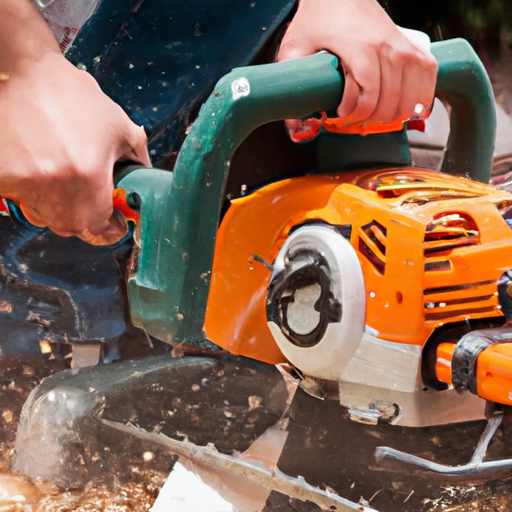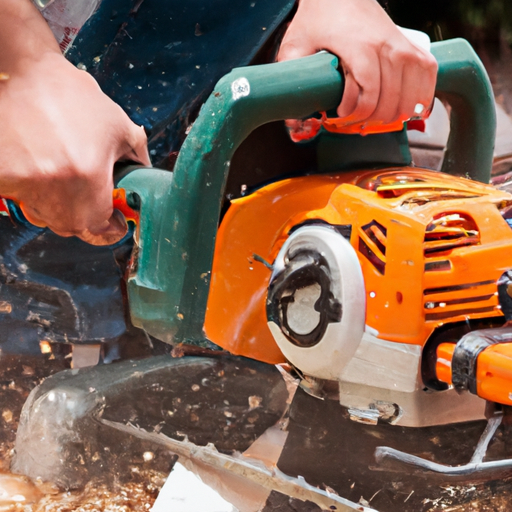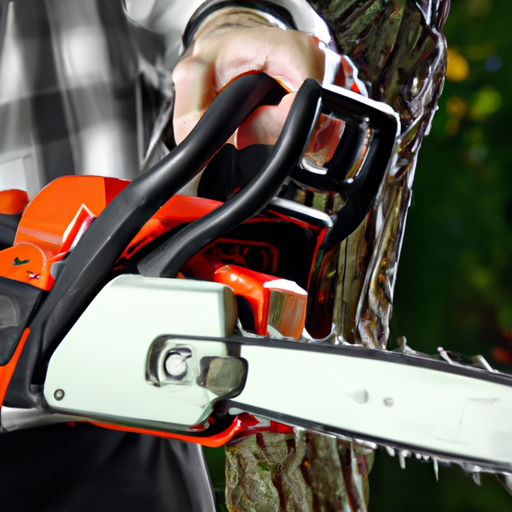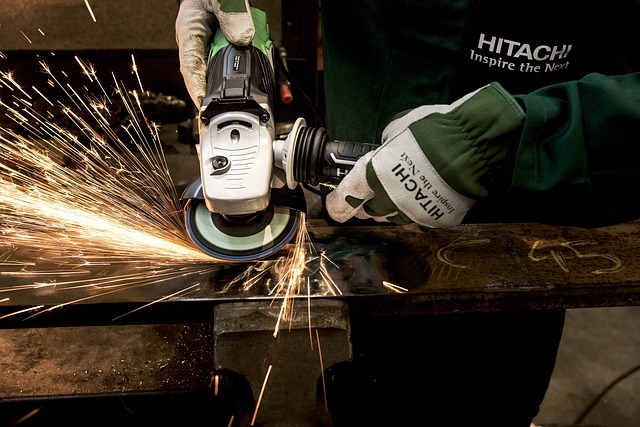Are you looking to use a battery-powered planer for your woodworking projects? Well, we’ve got some important safety tips that you should keep in mind! Using a battery-powered planer can be a convenient and efficient way to shape and smooth wood, but it’s crucial to prioritize safety to avoid any accidents or injuries. In this article, we’ll discuss some essential safety tips for using battery-powered planers, so you can enjoy your woodworking projects while staying safe. Let’s dive in!
First and foremost, it’s important to always wear appropriate personal protective equipment (PPE) when using a battery-powered planer. This includes safety glasses or goggles to protect your eyes from any flying debris, as well as ear protection to prevent hearing damage from the noise of the machine. Additionally, wearing a dust mask is crucial to avoid inhaling any wood dust particles that can be harmful to your respiratory system.
Another safety tip is to make sure that you have a firm and stable grip on the planer at all times. Battery-powered planers can be powerful tools, and if not properly controlled, they can easily slip or kickback. To ensure a secure grip, keep both hands on the machine, with one hand on the handle and the other on the auxiliary handle if available.
Lastly, it’s important to carefully plan your work area before using a battery-powered planer. Clear any obstacles or clutter that may cause you to trip or lose balance. Also, make sure there’s enough space for the wood you’re working on and that it’s properly secured. Taking these precautions will help minimize the risk of accidents and ensure a safer woodworking experience.
In summary, when using a battery-powered planer, always prioritize safety by wearing appropriate PPE, maintaining a firm grip on the machine, and planning your work area effectively. By following these safety tips, you can enjoy your woodworking projects while minimizing the risk of accidents or injuries. Remember, safety should always come first! Stay tuned for more detailed safety guidelines in the upcoming article.
Overview of Battery-Powered Planers
Battery-powered planers are versatile and convenient tools that allow for efficient wood planing without the need for cords or power outlets. These planers are powered by rechargeable batteries, providing users with freedom of movement and the ability to work in various locations. However, like any power tool, battery-powered planers come with their own set of risks and hazards. In this article, we will explore the advantages of battery-powered planers, understand the risks associated with their operation, and provide safety tips for using them effectively.
What is a Battery-Powered Planer?
A battery-powered planer is a handheld power tool that is used to shave and smooth the surface of wood. It consists of a motor, a rotating cutterhead with multiple blades, and a guide plate that determines the depth of the cut. These planers are commonly used in woodworking projects such as furniture making, flooring installation, and carpentry.
Advantages of Battery-Powered Planers
Battery-powered planers offer several advantages over their corded counterparts. First and foremost, their portability allows us to work in remote locations or areas without access to electrical outlets. This makes them ideal for construction sites or outdoor woodworking projects. Additionally, battery-powered planers eliminate the risk of tripping over cords or accidentally cutting them while working. They also provide freedom of movement and flexibility, allowing us to work at different angles and positions without the constraint of a cord.
Understanding the Risks
Despite the convenience and versatility of battery-powered planers, it is important to understand the risks associated with their operation. These tools have sharp rotating blades that can cause severe cuts and injuries if not used properly. Kickback, where the planer is forcefully thrown back towards the user, is a common hazard. Additionally, the high-speed rotation of the blades produces wood chips and dust, which can be harmful if inhaled or come into contact with the eyes. Lastly, improper handling or storage of the batteries can lead to fire hazards and electrical shocks.
Pre-Operation Safety Checks
Before using a battery-powered planer, it is crucial to perform a few safety checks to ensure that the tool and work area are safe.
Inspect the Battery
Check the battery for any signs of damage or corrosion. Make sure it is fully charged and secure it properly to the planer. Faulty batteries can pose a safety risk and may require replacement.
Check the Blade
Inspect the planer blade for any signs of wear or damage. Replace any dull or damaged blades immediately to ensure clean and safe cuts. Always follow the manufacturer’s instructions when changing blades.
Secure Workpiece and Workspace
Ensure that the workpiece is securely clamped or held in place to prevent it from moving during operation. Clear the workspace of any obstacles or debris that could cause accidents or interfere with the planer’s operation.

Personal Protective Equipment (PPE)
Wearing appropriate personal protective equipment (PPE) is essential when operating a battery-powered planer. The following safety gear should be worn at all times:
Safety Glasses
Protect your eyes from flying wood chips and debris by wearing impact-resistant safety glasses. They should provide full coverage and have side shields for maximum protection.
Hearing Protection
Battery-powered planers can generate loud noise levels that can damage hearing over time. Use earplugs or earmuffs to protect your ears from excessive noise exposure.
Dust Mask
To protect your respiratory system from inhaling wood dust, wear a dust mask or a respirator. Wood dust can cause respiratory problems and allergic reactions, so it is important to minimize exposure.
Gloves
Wear snug-fitting gloves that provide a good grip and dexterity. They will protect your hands from cuts and make it easier to handle the planer safely.
Safe Operating Procedures
To ensure safe operation of a battery-powered planer, follow these recommended procedures:
Read the Instruction Manual
Before using a battery-powered planer, thoroughly read and understand the instruction manual provided by the manufacturer. Familiarize yourself with the tool’s features, operation, and safety guidelines.
Positioning and Holding the Planer
Hold the planer with both hands, using a firm grip on the handles. Position yourself in a stable stance with your feet shoulder-width apart. This will provide better control and stability during operation.
Avoid Overloading the Tool
Do not exert excessive force or overload the planer. Allow the tool to cut at its own pace, applying steady and even pressure. Forcing the planer can lead to kickback or uneven cuts.
Maintaining a Stable Stance
When using a battery-powered planer, maintain a stable and balanced stance. Do not overreach or lean too far into the work area, as this may result in loss of balance and potential accidents.

Battery Safety
Proper handling, charging, and storage of batteries are crucial for safe operation of battery-powered planers.
Proper Battery Charging
Follow the manufacturer’s instructions for charging the batteries. Use only the specified chargers and do not leave the batteries unattended while charging. Overcharging or using incorrect chargers can lead to battery failures and safety hazards.
Handling and Storage of Batteries
Store batteries in a cool and dry place, away from direct sunlight or extreme temperatures. Avoid exposing batteries to water or other liquids. If a battery becomes damaged or starts leaking, handle it with care and dispose of it according to local regulations.
Common Hazards and How to Avoid Them
When using a battery-powered planer, it is important to be aware of common hazards and take necessary precautions to avoid them.
Kickback Prevention
To prevent kickback, always position the planer in such a way that the blade travels in the opposite direction of the user. Maintain a firm and secure grip on the handles and avoid applying excessive force or uneven pressure.
Avoiding Accidental Startups
Before inserting or removing the battery, ensure that the power switch is in the off position. Never leave the battery inserted when the planer is not in use, as this can lead to accidental startups and potential injuries.
Managing Dust and Debris
To minimize the accumulation of wood chips and dust, regularly clean the planer’s dust collection system. Always operate the planer in a well-ventilated area or use a dust extraction system to remove airborne particles.
Maintenance and Care
Proper maintenance and care of the battery-powered planer are essential for its longevity and safe operation.
Cleaning and Lubrication
After each use, clean the planer thoroughly and remove any residue or debris. Lubricate the moving parts as recommended by the manufacturer to ensure smooth and efficient operation.
Blade Replacement
Regularly inspect the planer blade for wear and tear. Replace the blade when necessary, following the manufacturer’s instructions. Dull or damaged blades can result in unsafe cuts and poor planing performance.
Regular Inspection
Periodically inspect the overall condition of the battery-powered planer. Check for loose screws, cracks in the housing, or any other signs of damage. Address any issues promptly to maintain the tool’s safety and functionality.
Emergency Procedures
In the event of an emergency while using a battery-powered planer, it is important to know how to react and take appropriate measures.
Emergency Shut-off
Familiarize yourself with the location and operation of the emergency shut-off switch on the planer. In case of an emergency, immediately turn off the tool to prevent further accidents or injury.
First Aid Measures
If an accident or injury occurs, provide immediate first aid as necessary. Have a well-stocked first aid kit nearby and seek professional medical attention if needed.
Additional Safety Considerations
In addition to the previously mentioned safety tips, there are a few additional considerations to keep in mind when using battery-powered planers.
Working with Batteries
Always use batteries recommended by the manufacturer and follow proper charging and storage guidelines. Do not mix different types or brands of batteries, as this can lead to compatibility issues and safety hazards.
Avoiding Fatigue
Using a battery-powered planer can be physically demanding. Take regular breaks, stretch your muscles, and stay hydrated to avoid fatigue or muscle strain.
Safe Tool Storage
When not in use, store the battery-powered planer in a safe and secure place, away from children or unauthorized users. Store the batteries separately in a designated area, ensuring they are kept in a cool and dry environment.
Conclusion
Battery-powered planers offer great convenience and versatility, but it is important to prioritize safety when using these tools. By following the safety tips outlined in this article, you can effectively mitigate risks and ensure a safe working environment. Remember to always read and understand the manufacturer’s instructions, wear appropriate personal protective equipment, and maintain your planer properly. Safe usage of battery-powered planers will not only protect you from accidents and injuries but also result in higher quality woodworking projects. Happy and safe planing!



